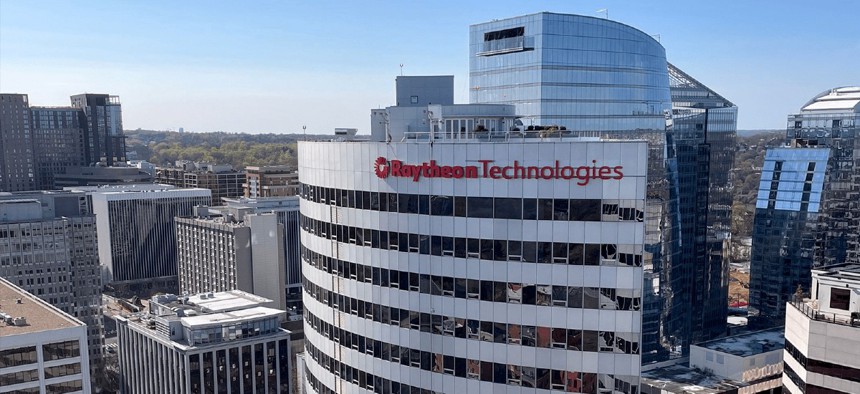Raytheon Technologies shows more of its new alignment

RTX's global headquarters in Arlington, Virginia.
The aerospace-and-defense giant is moving several pieces of its portfolio around in a push to unlock more synergies.
Raytheon Technologies is reorganizing itself three years into the company's post-megamerger era and previously indicated it would know more about what that picture looks like by the end of the first quarter.
That quarter is behind RTX, so now it is showing investors how its two primarily government facing segments have combined into a new segment called "Raytheon." RTX's new alignment will consist of Raytheon, Collins Aerospace and Pratt & Whitney as its three segments.
RTX continues to see July as when it will start operating under that new structure, Chief Operating Officer Christopher Calio said Tuesday during the company's first quarter earnings call with analysts.
Wes Kremer, current president of the missiles and defense segment, will lead the new Raytheon business being formed out of the combination of the RMD team with the intelligence and space segment internally called RIS.
As with any realignment at a large company, there are several moving pieces to account for in order to understand how that firm is positioning itself to execute on its current agenda and pursue future opportunities.
Calio told analysts that RTX has made determinations on "major content shifts" to make within its portfolio, which will result in the Collins Aerospace segment taking on more.
One shift to Collins Aerospace involves its absorption of the multi-domain command-and-control product lines from the RIS and RMD businesses, a move Calio characterized as creating "a more focused business to support connected battlespace opportunities."
Collins Aerospace is also bringing in RIS' air traffic management business to further consolidate "what we call the connected ecosystem of flight data and management into one business," Calio said.
"These two moves will put Collins at the center of our company-wide collaboration efforts. They will now be responsible for more than half of our revenue synergy projects," Calio added.
The under-construction Raytheon segment will take in Collins Aerospace' intelligence, surveillance and reconnaissance business. Calio said RTX's thinking behind that move is to combine "complementary sensing and imaging technologies" for use in improving current offerings.
Raytheon will also take on a structure with its business units organized around customers such as the Air Force, Army, Navy, space programs and missile defense.
A separate unit RTX is standing up under Raytheon will play the role of merchant supplier, where companies provide certain products to other contractors making larger platforms.
"We'll centralize components and subsystems that are sold internally as well as to a broad array of government, commercial and other prime customers -- enabling us to sell more effectively into these channels," Calio said.
RTX plans to share more details on that ongoing transformation effort, among many others, during its next investor day on June 19 at the Paris Air Show.
NEXT STORY: ASRC Federal moves quickly on next acquisition


